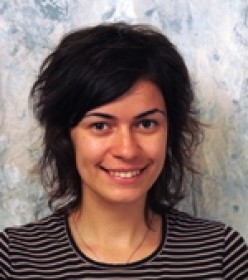PhD Thesis Defense
Dynamic Model Formulation and Calibration for Wheeled Mobile Robots
Event Location: NSH 1507Abstract: Advances in hardware design have made wheeled mobile robot(WMRs) exceptionally mobile. To fully exploit this mobility, WMR planning, control,and estimation systems require motion models that are fast and accurate. Much of the published theory on WMR modeling is limited to 2D or kinematics, but 3D dynamic (or force-driven) models are required [...]
Vector Map-Based, Non-Markov Localization for Long-Term Deployment of Autonomous Mobile Robots
Event Location: GHC 4405Abstract: As robots become increasingly available and capable, there has been an increased interest in having robots continue to perform autonomously over time despite changes in their environment. This thesis recognizes the wide variations in the applications and constraints of mobile robot localization in human environments, and proposes a number of localization [...]
Natural Language Direction Following for Robots in Unstructured Unknown Environments
Event Location: NSH 3305Abstract: Robots are increasingly performing collaborative tasks with people in our homes, workplaces, and outdoors, and with this increase in interaction comes a need for efficient communication between human and robot teammates. One way to achieve this communication is through natural language, which provides a flexible and intuitive way to issue commands [...]
Experience Graphs: Leveraging Experience in Planning
Event Location: NSH 3305Abstract: Motion planning is a central problem in robotics and is crucial to finding paths to navigate and manipulate safely and efficiently. Ideally, we want planners which find paths quickly and of good quality. Additionally, planners should generate predictable motions, which are safer when operating in the presence of humans. While the [...]
Handheld Micromanipulator for Robot-Assisted Microsurgery
Event Location: NSH 3305Abstract: Robot-assisted surgery has been increasingly adopted in a wide variety of surgical applications because it offers fine manipulation with high precision and dexterity. Despite the commercial success of robotic platforms, practical use in microsurgery is still challenging due to a considerable level of accuracy required at sub-millimeter scales. Limited visualization and [...]
Legible Robot Motion Planning
Event Location: GHC 8102Abstract: The goal of this thesis is to enable robots to produce motion that is suitable for human-robot collaboration and co-existence. Most motion in robotics is purely functional: industrial robots move to package parts, vacuuming robots move to suck dust, and personal robots move to clean up a dirty table. This type of [...]
3D Manipulation of Objects in Photographs
Event Location: NSH 1305Abstract: This thesis describes a system that allows users to to perform full three-dimensional manipulations to objects in photographs. Cameras and photo-editing tools have contributed to the explosion in creative content by democratizing the process of creating visual realizations of users' imaginations. However, shooting photographs using a camera is constrained by real-world [...]
Predicting Sets and Lists: Theory and Practice
Event Location: NSH 1305Abstract: Increasingly, real world problems require multiple predictions while traditional supervised learning techniques focus on making a single best prediction. For instance in advertisement placement on the web, a list of advertisements is placed on a page with the objective of maximizing click-through rate on that list. In this work, we build [...]
Bayesian Aggregation of Evidence for Detection and Characterization of Patterns in Multiple Noisy Observations
Event Location: NSH 1305Abstract: Effective use of Machine Learning to support extracting maximal information from limited sensor data is one of the important research challenges in robotic sensing. This thesis develops techniques for detecting and characterizing patterns in noisy sensor data. Our Bayesian Aggregation (BA) algorithmic framework can leverage data fusion from multiple low Signal-To-Noise [...]








